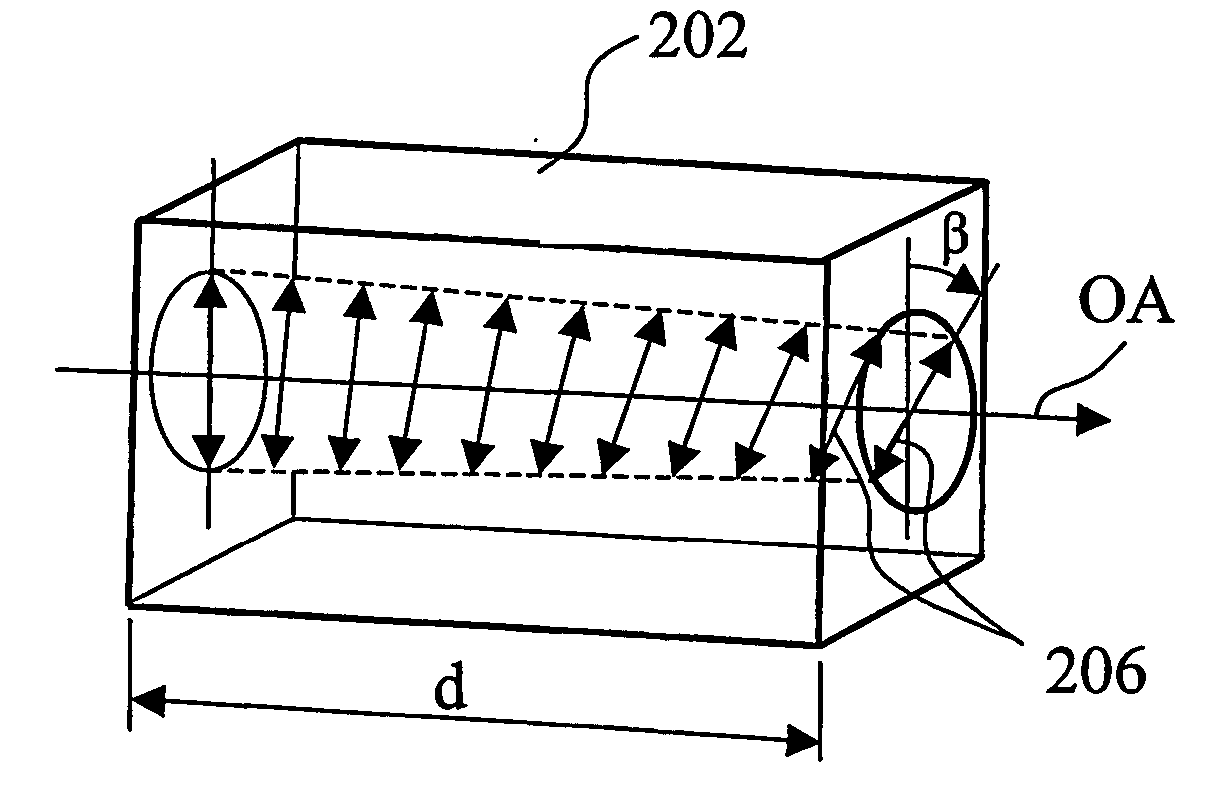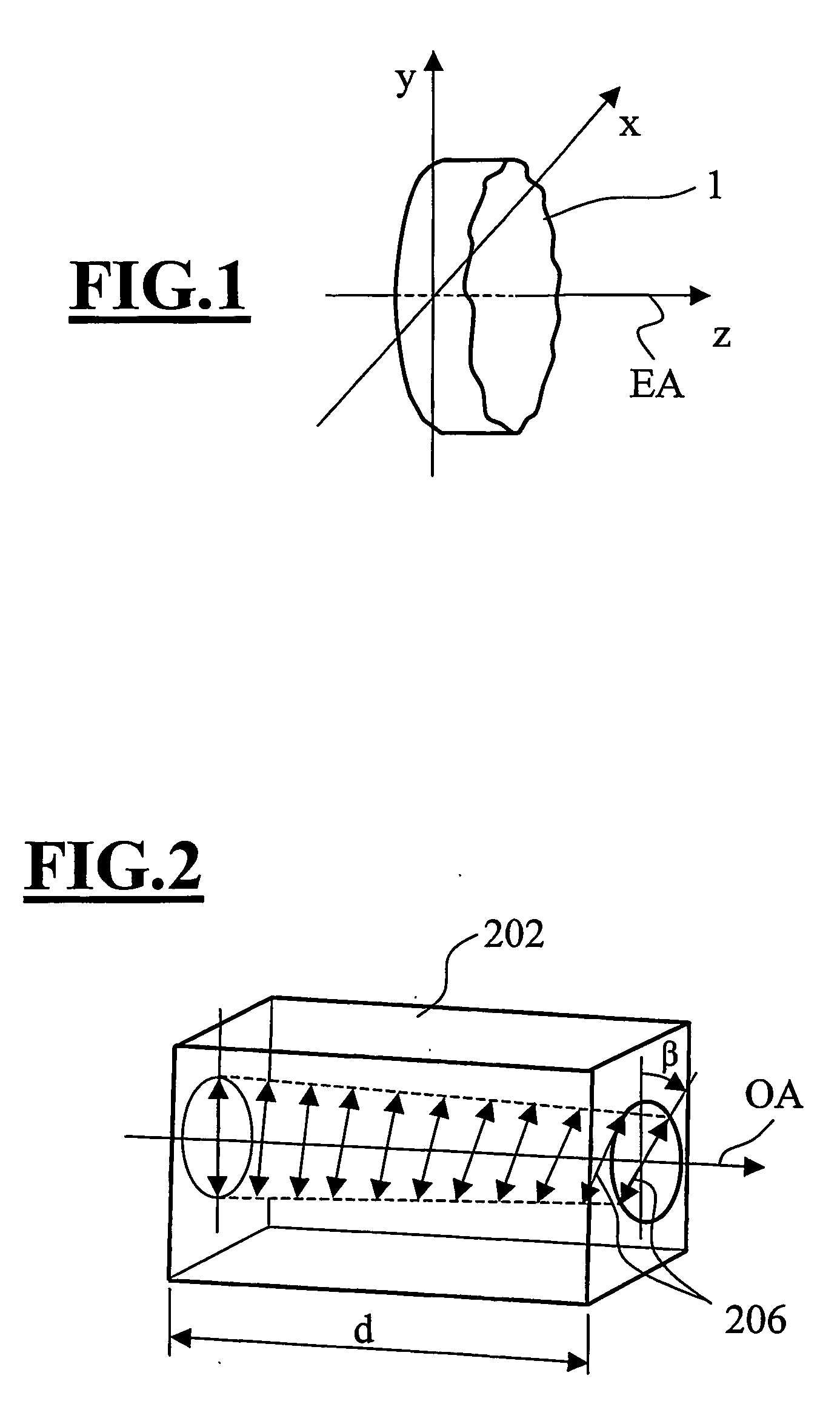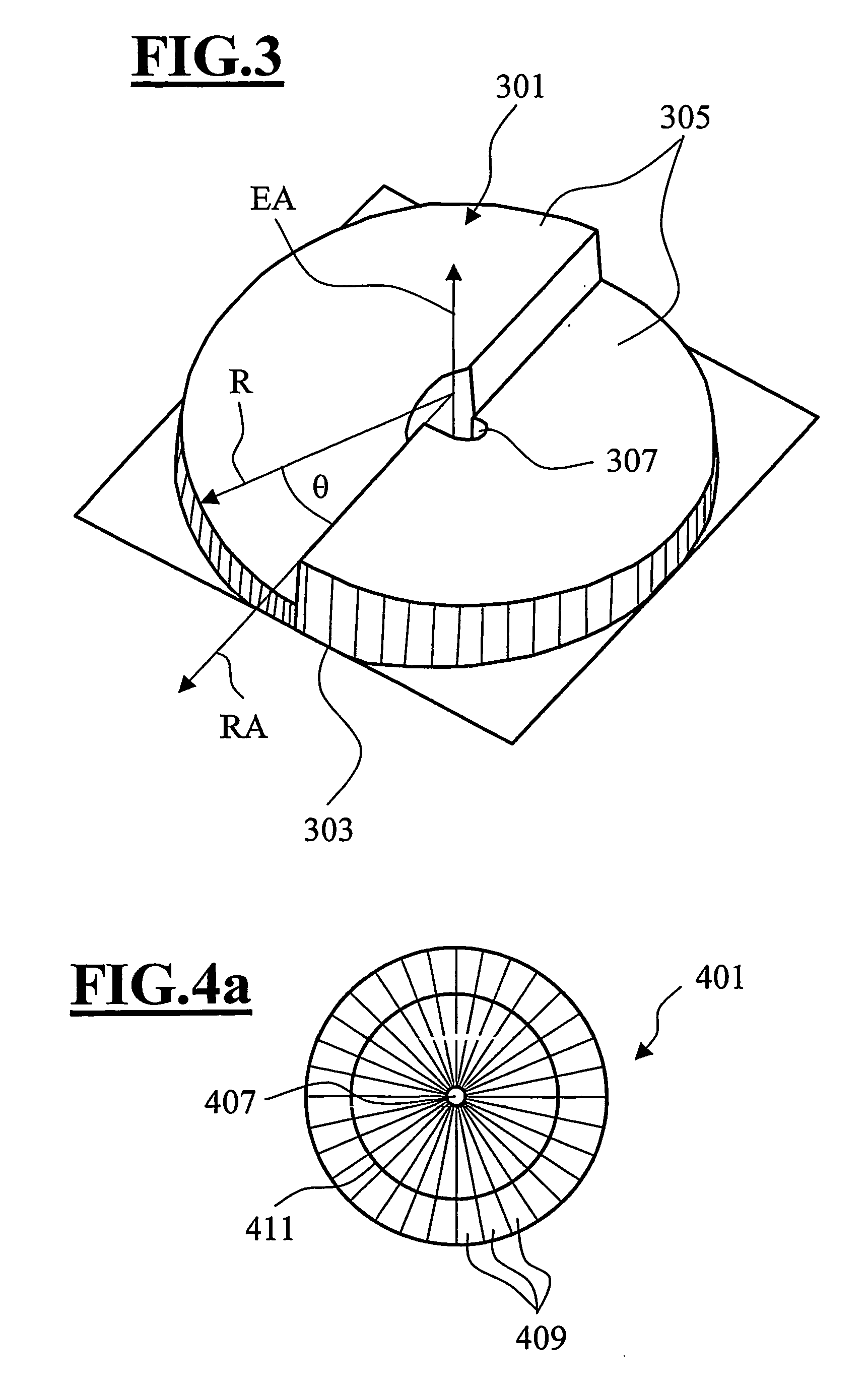Polarization-modulating optical element
a technology of optical elements and modulators, applied in the field of optical elements, can solve the problems of high production costs and significant detrimental effects on the imaging process
- Summary
- Abstract
- Description
- Claims
- Application Information
AI Technical Summary
Benefits of technology
Problems solved by technology
Method used
Image
Examples
Embodiment Construction
[0058]FIG. 1 illustrates a polarization-modulating optical element 1 of an optically active material. Particularly well suited for this purpose are optically active crystals with at least one optical crystal axis which are transparent for the wavelength of the light being used. For example TeO2 works in a range of wavelengths from 1000 nm down to 300 nm, AgGaS2 works from 500 nm to 480 nm, and quartz from 800 nm down to 193 nm. The polarization-modulating optical element 1 is designed so that the element axis is oriented parallel to the optical crystal axis. In order to produce a selected polarization distribution, the optical element 1 is designed with a thickness profile (measured parallel to the element axis EA) which varies in the directions perpendicular to the element axis EA, also comprising variations in thickness of the optical element in an azimuth direction θ (see FIG. 3) at e.g. a fixed distance of the element axis EA.
[0059]FIG. 2 will serve to explain the function of o...
PUM
| Property | Measurement | Unit |
|---|---|---|
| azimuth angle | aaaaa | aaaaa |
| azimuth angles | aaaaa | aaaaa |
| angle of incidence | aaaaa | aaaaa |
Abstract
Description
Claims
Application Information
 Login to View More
Login to View More - R&D
- Intellectual Property
- Life Sciences
- Materials
- Tech Scout
- Unparalleled Data Quality
- Higher Quality Content
- 60% Fewer Hallucinations
Browse by: Latest US Patents, China's latest patents, Technical Efficacy Thesaurus, Application Domain, Technology Topic, Popular Technical Reports.
© 2025 PatSnap. All rights reserved.Legal|Privacy policy|Modern Slavery Act Transparency Statement|Sitemap|About US| Contact US: help@patsnap.com



